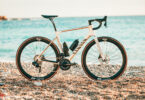In the biggest comparison test in our history, we had the 19 most important gravel bikes of the 2022 season go head-to-head. How much does a good gravel bike cost? What is the best all-rounder overall and where is the journey in the gravel segment leading? In Girona, on Spanish gravel dreams, we looked for answers and found them.

Content
- The testfield
- Where did we test?
- What makes a good gravel-bike?
- Who tested the bikes?
- The best gravel-bike in this test
- The competition
This is it: the biggest gravel bike test we have ever done – the gravel world championship of all gravel tests! For us, gravel bikes are much more than just road bikes for the gravel road and since you are reading these words right now, there is a very high chance that you feel the same way. Gravel is an attitude towards riding and towards life itself. For many of us, gravel bikes are freedom machines, shrinks, expedition vehicles, tour operators, training tools and everyday companions all rolled into one. As multi-talented bikes that know almost no obstacles, they bridge the gap between paved roads and natural surfaces. We invited the 19 most exciting models for the 2022 and 2023 season to test and find out which bike is the best all-rounder. In a field as diverse as the gravel market, everyone is guaranteed to find a suitable model – provided you know what you want and are honest with your self-assessment. Our comparison test should make your purchase decision easier, and explains clearly which bike suits which type of rider. Curtain up!

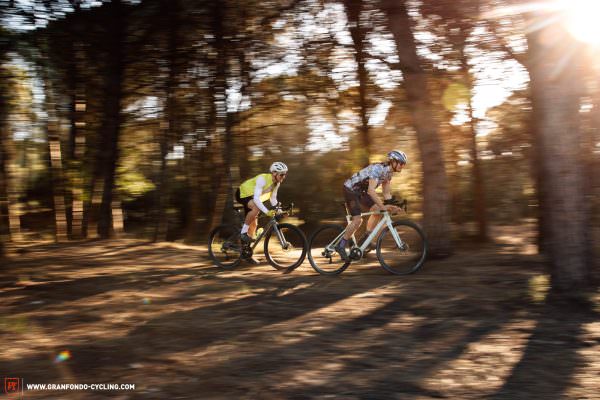


The tide has turned – gravel bikes have the power
The king is dead, long live the king. The hammer has fallen – the GRAN FONDO community has decided that there are more gravel fans among you than road bike lovers. We asked you which bikes you ride and well over 11,000 of you answered. For the first time, the ranking of our international reader survey is topped by gravel bikes, which with determination continue the impressive trend of the last few years and take the top spot with a 5 percentage point increase and a total of 51%. After taking heavy losses in the previous year, race bikes remain at 43% and endurance bikes at 34% in second and third place, respectively. The question of what type of bike you want to buy also basically reflects the trends of your current bikes. Accordingly, gravel bikes are in pole position here, too, with 41%, while 31% are interested in a race bike and 23% would prefer an endurance bike.



The bike industry has long recognised this. For quite a while, it was enough for bike manufacturers to have a single gravel bike in their portfolio. All models seemed to have the same all-round characteristics. Although there were already considerable differences between the brands’ gravel interpretations at that time, a lot has changed in recent months: the market for gravel bikes is moving further away from its “one bike for everything” approach towards a finely segmented mass market. From gravel bikes for MTB light trail use to time trial gravel machines, there is hardly anything left that is not available. For the gravel fan in search of his perfect companion, this is of course both a curse and a blessing! Because apparently it is suddenly no longer enough to want to ride a bike that can simply take on any adventure. Instead, you get the feeling that you have to be classified as a gravel racer, pleasure rider, adventurer or commuter. At the same time, specially optimised bike models naturally offer clear advantages for specialised riders who know exactly what they want.
The GRAN FONDO community has decided: most of you ride gravel bikes or want to buy one. Gravel is in power!

If you take a look at the current market for road bikes, you can see that more and more categories are being combined. Technical innovations make road bikes able to do more and more, while the UCI and its rules tirelessly regulate and define with their statutes exactly what can and cannot be on a race bike. In the end, two types of race bikes remain: highly developed and pure bred race bikes (you can find our comparison test here) on the one hand and what is called an everyman, all-road, endurance or “whatever” bike on the other. You can find our comparison test of the best road bikes in general here (to the test).
In business administration, “shelf space” is an important metric and of course no bike brand wants to lose out here, so it seems that what contracts on one side expands on the other. But it is not just purely economic interests that are accelerating and favouring the segmentation of gravel bikes. Where there are more people, there is a greater desire and need for specialised solutions. So gravel race bikes, everyday bikes, adventure bikes and all-road offshoots are being drawn from the niche of the niche into the centre of the mainstream. Gravel bikes have the power, their hour has come and our test field reflects exactly that!

The test field: What did we test?
With the boom of the gravel segment, the choice of gravel bikes is also continuously increasing – and with it the difficulty of putting together a test field that keeps a sensible balance between relevance for you – our readers – and a look beyond the end of one’s nose and towards trends or exciting exotics. Nevertheless, we have dared to perform exactly this balancing act and have racked our brains over which candidates absolutely have to be there and which could be an exciting broadening of perspectives. With these considerations, we have put together an exciting and relevant test field, in which not only a deserving test winner is hiding, but in which there should also be a suitable gravel bike for everyone of you. What didn’t we test then? Even we as a magazine are not immune to the current poor availability and the limited supply capacity of the bike industry. Thus, exciting and brand new bikes from big manufacturers like Orbea and Trek are missing from the test, which unfortunately did not make it to us in time. The Trek Checkpoint SLR in particular would have had a good chance on paper to have a say in the title race. Here, we are particularly curious about the upcoming individual test. Below, you’ll find an overview of the 19 bikes that made it to us in time for the test:
| Modell | Groupset | Wheelset | Weight | Price |
|---|---|---|---|---|
| 3T Exploro Ultra (Click for review) |
SRAM Force eTap AXS mit XX1 Eagle AXS-Schaltwerk | 3T Discus 45|40 LTD | 8.47 kg [56] | € 8.199 |
| BMC URS LT ONE (Click for review) |
SRAM Force eTap AXS mit X01 Eagle AXS-Schaltwerk | CRD-400 SL Carbon | 9.52 kg [L] | € 7.999 |
| Cannondale SuperSix EVO SE (Click for review) |
SRAM Rival eTap AXS | DT Swiss CR1600 SPLINE | 8.72 kg [56] | € 4.999 |
| Canyon Grizl CF SLX 8 eTap Suspension (Click for review) |
SRAM Force eTap AXS XPLR | Reynolds ATR | 9.42 kg [M] | € 4.999 |
| Cervélo Áspero GRX Di2 (Click for review) |
Shimano GRX RX815 Di2 | Reserve 32 | 8.37 kg [58] | € 6.699 |
| CUBE Nuroad C:62 SLT (Click for review) | SRAM Force eTap AXS XPLR | NEWMEN ADVANCED SL X.R.25 | 8.04 kg [56] | € 3.699 |
| Curve Kevin of Steel III (Click for review) |
Shimano GRX RX815 Di2 | ENVE G27 | 10.55 kg [L] | € 5.500 |
| Falkenjagd Aristos R (Click for review) |
Campagnolo EKAR | Parapera | 9.00 kg [L] | € 8.484 |
| Felt Breed 20 (Click for review) |
SRAM Force 1 | Devox WheelRDS.A0 GXA | 9.47 kg [56] | € 2.649 |
| FOCUS ATLAS 6.8 (Click for review) |
Shimano GRX RX600 | DT Swiss E 1800 SPLINE 32 | 10.65 kg [L] | € 2.199 |
| GIANT Revolt Advanced 0 (Click for review) |
Shimano GRX RX810 | GIANT CXR 2 Disc Carbon | 8.76 kg [ML] | € 3.999 |
| OPEN WI.DE. (Click for review) |
SRAM Force eTap AXS mit XX1 Eagle AXS-Schaltwerk | ENVE AG28 | 8.34 kg [L] | € 7.600 |
| Ridley Kanzo Fast (Click for review) |
Campagnolo EKAR | Campagnolo Shamal Carbon C21 CB | 8.24 kg [M] | € 5.399 |
| ROSE BACKROAD EKAR LTD (Click for review) |
Campagnolo EKAR | Campagnolo Shamal Carbon C21 CB | 8.39 kg [57] | € 5.599 |
| SCOTT Addict Gravel Tuned (Click for review) |
SRAM RED eTap AXS XPLR | DT Swiss GRC1400 SPLINE | 8.12 kg [L] | € 8.999 |
| Specialized S-Works Crux (Click for review) |
SRAM RED eTap AXS XPLR | Roval Terra CLX | 7.15 kg [56] | € 12.800 |
| Stelbel Nina XCr (Click for review) |
Campagnolo EKAR | Campagnolo Shamal Carbon C21 CB | 8.92 kg [Custom] | € 8.100 |
| Storck GRIX.2 Platinum (Click for review) |
SRAM Force eTap AXS XPLR | DT Swiss GRC1400 SPLINE | 8.18 kg [M] | € 6.299 |
| Wilier Rave SLR (Click for review) |
SRAM Force eTap AXS XPLR | Miche Carbo Graff | 7.70 kg [L] | € 8.400 |
| Ø 8.74 kg | Ø € 6.454 |
The question of materials for the best gravel bikes seems to have been clearly answered. Of the 19 test bikes, 14, so the vast majority, rely on carbon, hoping for a good combination of low weight and superior damping characteristics. However, our test also shows that other materials can be used to build good gravel bikes. The FOCUS ATLAS 6.8 and the Felt Breed 20 are two aluminium bikes in the comparison test. In addition, there are two steel bikes, the Stelbel Nina XCr and the Curve Kevin of Steel III, and the Falkenjagd Aristos R, a gravel bike made of 3D printed titanium. But it is not only the frame materials that differ, there are also significant differences in the geometries and frame shapes, which also leads to large differences in aerodynamics, stiffness and comfort. Due to the different frame materials and equipment of the bikes, there is also a wide range in weight: there is a whole 3.5 kg between the Specialized S-Works Crux (7.15 kg) and the FOCUS ATLAS 6.8 (10.65 kg). Okay, let’s make the weight difference even more vivid: three Specialized S-Works Crux weigh only 150 g more than two FOCUS ATLAS 6.8. The average weight of all 19 bikes is 8.74 kg, roughly in the middle of the two extremes. Speaking of extremes, there are also clear differences in the prices of the test bikes – and again the Specialized S-Works Crux and the FOCUS ATLAS 6.8 are involved. While the FOCUS ATLAS 6.8 as the heaviest bike is also the cheapest on test at € 2,199, the Specialized S-Works Crux as the lightest bike is also the most expensive. At € 12,800 it costs almost six times as much as the FOCUS ATLAS 6.8, almost twice as much as the average price of all test bikes of € 6,454 and a whole € 3,800 more than the second most expensive bike in the test (SCOTT Addict Gravel Tuned). How do such differences come about and are they justified by the performance?
The most expensive bike in the test costs almost six times as much as the cheapest and twice as much as the average!



Price matters: Why are some bikes so expensive?
In this comparison test, our aim is to choose the best all-round gravel bike. Accordingly, many manufacturers did not take long to send in their top models. Other manufacturers have opted for less expensive bikes, partly due to availability. In-between are the manufacturers whose portfolios do not include model variants equipped with the highest-priced components, such as gears, brakes and wheels, from the respective suppliers. Nevertheless, the average price of € 6,454 of the bikes in this year’s gravel comparison test has risen by almost € 800 compared to last year. According to our last reader survey, you want to spend an average of € 4,800 on your next bike, which is a good € 600 more than last year. It remains to be said that the average bike from this test is too expensive for the average reader. Especially gravel newcomers who do not come from the mountain bike or road bike sector, but are completely new to cycling, may be unsettled by the sometimes very high prices. How do they come about and do they really reflect the performance of the respective bike?
We think not! Because while price-driving factors such as current inflation and the low availability of the last two years affect all manufacturers, some manufacturers shine with mark-ups on high-end models that are higher than the total price of the cheapest bikes in the test. Can one bike have six times the utility value of another? That’s a question that can be debated indefinitely! If the Specialized S-Works Crux helps you win the cyclocross world championship, then that is certainly the case. For the majority of you, on the other hand, it’s probably not. Although the Crux is a bike that goes to the extremes, (spoiler alert) sets standards in weight, performance and speed, and has nothing to be ashamed of in being the most expensive bike in the test, its price is driven more by supply and demand than by pure performance gain for the average rider. And due to the fact that Specialized is probably one of the manufacturers who reserved the limited production capacities at the beginning of the Corona pandemic, when demand skyrocketed, the prices have only been corrected upwards accordingly.

Fortunately, there is a cheaper version of almost every expensive bike in our comparison test. Our test results allow to draw conclusions to a certain extent about the handling of cheaper alternatives because the geometry remains the same regardless of the price point. However, you should keep in mind that some manufacturers use a cheaper carbon resin composite for cheaper models, which can have correspondingly different handling characteristics. At the same time, manufacturers such as 3T, OPEN and BMC offer their frames in the same high quality as a frameset, so that the total price can be reduced with cheaper add-on parts.
And how much do you actually have to pay to get what you want? Even if you want to hear a concrete sum at this point: unfortunately it’s not quite that simple. The demands and requirements of each gravel bike are too different. But we can reassure you – you don’t necessarily have to spend the average price mentioned above to get a good bike for (your) gravel. You can find out exactly how much you should spend on a gravel bike and what else you need to consider when buying one here in our detailed gravel bike buying guide.
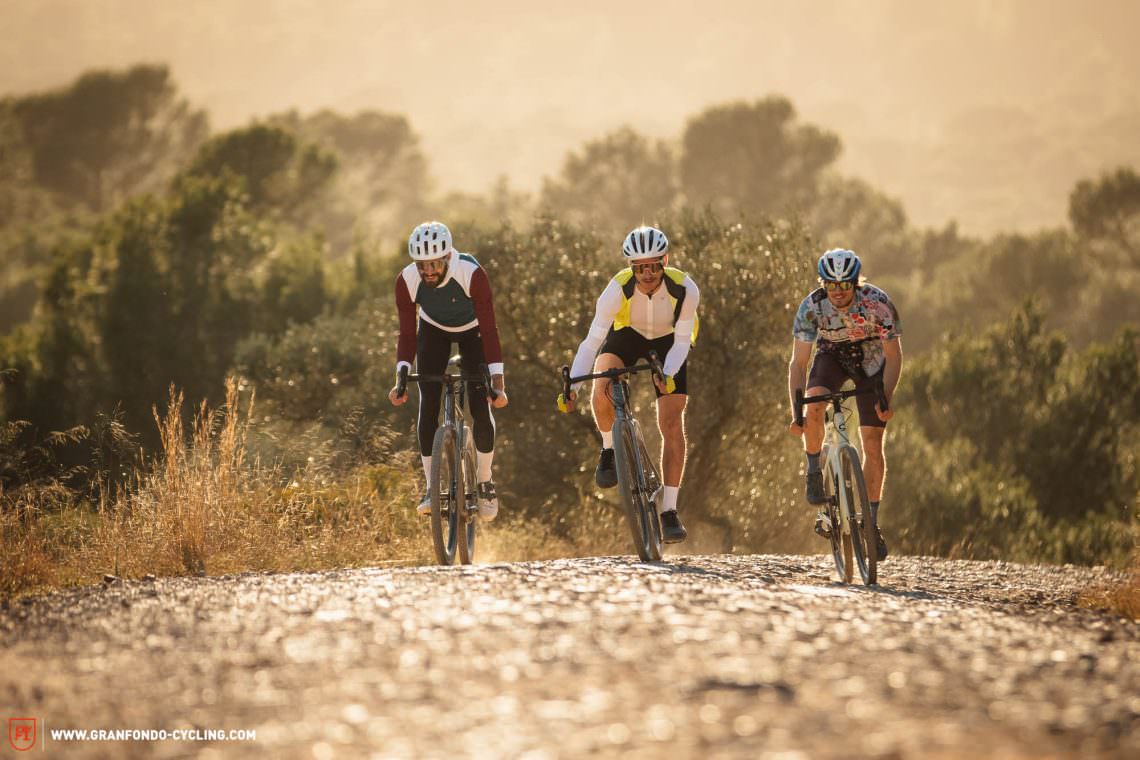
Where did we test?
This time we have chosen a very special spot of cycling turf for our gravel bike test: Girona! No further explanation is needed for those familiar with the scene. For everyone else: the Catalan city of Girona has become the preferred domicile of many international cyclists and triathletes over the years. Especially during the winter, the temperatures here are more pleasant by European standards and the sun shines from the sky more often than elsewhere. In addition, the city is located close to Barcelona and within easy reach of the Pyrenees and the Mediterranean Sea. With the many professional athletes – if you stand at Els Angles, the local climb, for half an hour, the chances of seeing at least one WorldTour pro are high – the infrastructure and awareness for cyclists also developed. Today, Girona is home to La Fabrica, arguably one of the best cycling cafés in the world, and The Service Course, an iconic bike shop that has conquered the world from Girona, to name just two examples – we could go on with the list! This infrastructure, in turn, attracts many amateur athletes, making Girona all about cycling. So it’s no coincidence that we spent our stay in Jan Frodeno’s city oasis of La Comuna.



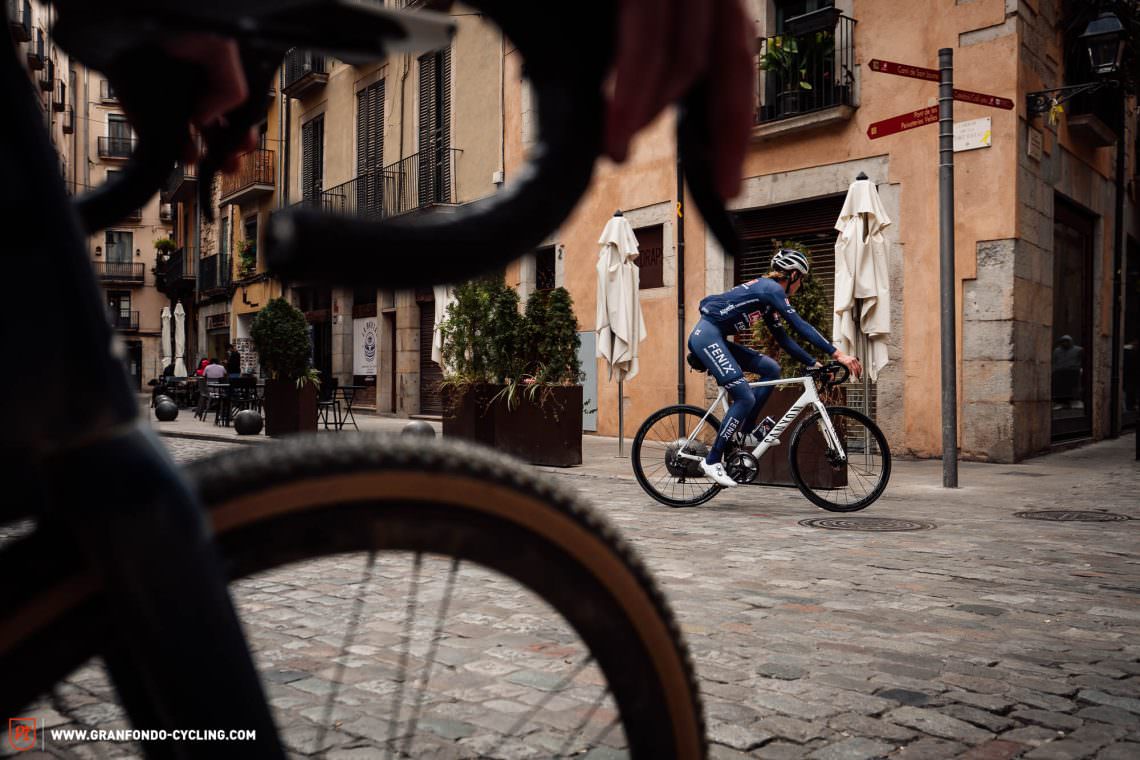



Girona also holds endless possibilities for gravel fans. The forested hills behind the city are criss-crossed by fire roads. They are peppered with curves of different radii, climbs and downhills of all degrees and can offer everything from packed to loose, coarse gravel. Hundreds of trails of all degrees of difficulty run in between. In the other direction, flat, dead-straight gravel highways and small roads with broken asphalt lead towards the coast. This means that everything we need for a gravel comparison test is in reach. The test is not about pushing the limits of what is possible on the test bikes, but about riding them under constant conditions in direct comparison to each other. While we were blessed with permanently blue skies in Girona, we were able to ride familiar routes in the winter commute between our Leonberg headquarters and home and gather impressions in bad weather. Since we have already tested countless bikes on our commuting routes, we know what a bike must be able to do or not do on them. Therefore, we were also able to take the performance of bikes as a reference, but that did not appear in the test field this time. Since we are looking for the best all-round gravel bike, we made sure to choose a track characteristic that can be found on many tours on a gravel bike – whether in Girona, Leonberg or where you live.
During our test we stayed in the city oasis of La Comuna. In the middle of Girona’s old town beats the heart of the Spanish cycling mecca!

Our test criteria – What makes a good gravel bike?
“Born ready.” “Do-it-all.” “No limits.” Even though it sounds like a BS marketing jargon, a good gravel bike actually needs to be all of these things, ready to tackle whatever you throw in its path. It should offer a high level of stability and optimal all-round characteristics while remaining comfortable enough for long days in the saddle! To be suitable for a wide variety of uses, the bike should also be light and agile enough for a quick after-work lap and sufficiently adaptable for multi-day adventures or everyday commutes. Besides this, the ideal gravel bike shouldn’t only perform flawlessly, but also score highly in terms of workmanship and style. If you’re going to do something, you might as well do it right. Right? But ultimately, that should all lead to the overriding and most important criterion of all: having fun! Those looking for lab results may question whether this is something that can be measured. Luckily, the answer is a resounding yes. We’ve broken down the individual criteria below.

1. Handling
We paid attention to how agile the bikes are on a scale from lively/playful to stable/sluggish. Does the handling feel nervous when quickly changing direction or maybe even tend toward speed wobble? How does it respond to the rider’s input and how does the bike’s cornering behaviour change on different surfaces? A good gravel bike is characterised by a perfect balance between agility and composure. Its response to input from the rider should be direct without feeling nervous. The ideal recipe for this cocktail is a well-coordinated mix of geometry, weight distribution, riding position and torsional stiffness of the frameset. You will never taste just a single ingredient in a good cocktail!
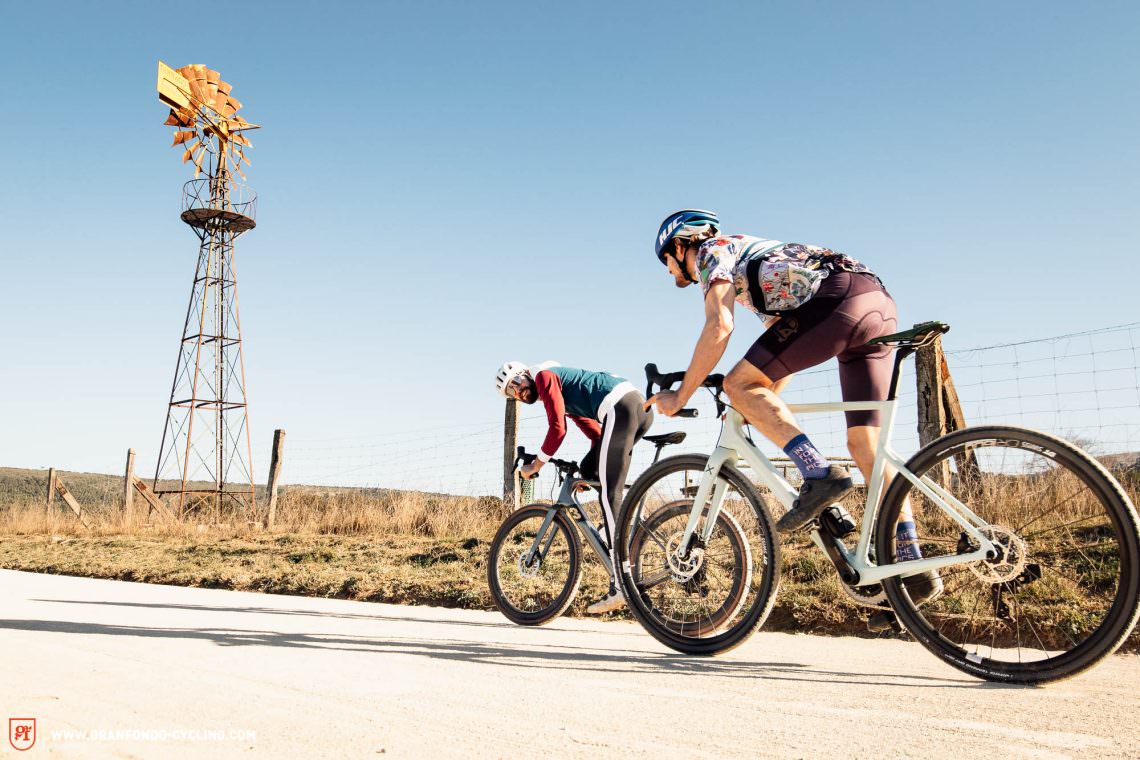
2. Confidence, control and trust…
These are especially important the moment you veer off perfectly tarred surfaces and head off into the unknown. A bike that’s easy to control not only helps you reach your destination in a more relaxed manner, but also helps you enjoy the ride more as you can take in the experience instead of having to concentrate on getting around the next bend. Intuitive handling and brakes that offer easy modulation are just as important as an even weight distribution on the bike and tires that offer sufficient grip whenever you need it. Of course, the bike should also be sturdy and reliable. It’s only when you know that you can rely on your bike to get you safely to your destination that you’ll have the confidence to head out into the unknown.

3. Comfort
Too much compliance can turn any ride, no matter how beautiful the scenery, into a nightmare of vagueness. However, the same applies to unnecessarily stiff bikes that pass even the smallest irregularities on to the rider with zero damping. Therefore, the overall comfort played a crucial role in our assessment of each bike. We weren’t concerned with the ergonomics of contact points like the saddle, as this aspect always depends on personal preference. Instead, it’s the damping of the complete system that was important to us – the suppleness of the tires and how they interact with the frameset and the compliance of all components together. It’s not about maximum compliance but a balanced level of comfort. For example, a very stiff frameset with high-volume tires, a very compliant cockpit and forgiving wheels can work well together, while the same components on a very compliant frameset will result in undefined and spongy handling. Correspondingly, the bike’s comfort must stem from more than just one source. If, for example, an otherwise very stiff bike is paired with a very flexible handlebar or wheels, this can harm its handling.

Components that flex should also offer some form of damping. This allows a good gravel bike to effectively dampen impacts and vibrations without feeling undefined, offering just the right amount of flex without snapping back like a spring. If the bike flexes without being dampened, the bike will wobble and will strain the rider more than it will relieve them. With the right level of comfort, you’ll be more relaxed as you arrive at your destination, staying fresher for longer, with more energy available when things get technical, making it easier to stay in control. As such, the bike’s comfort has a direct influence on the rider’s wellbeing and, in turn, the feeling of confidence, control and trust.
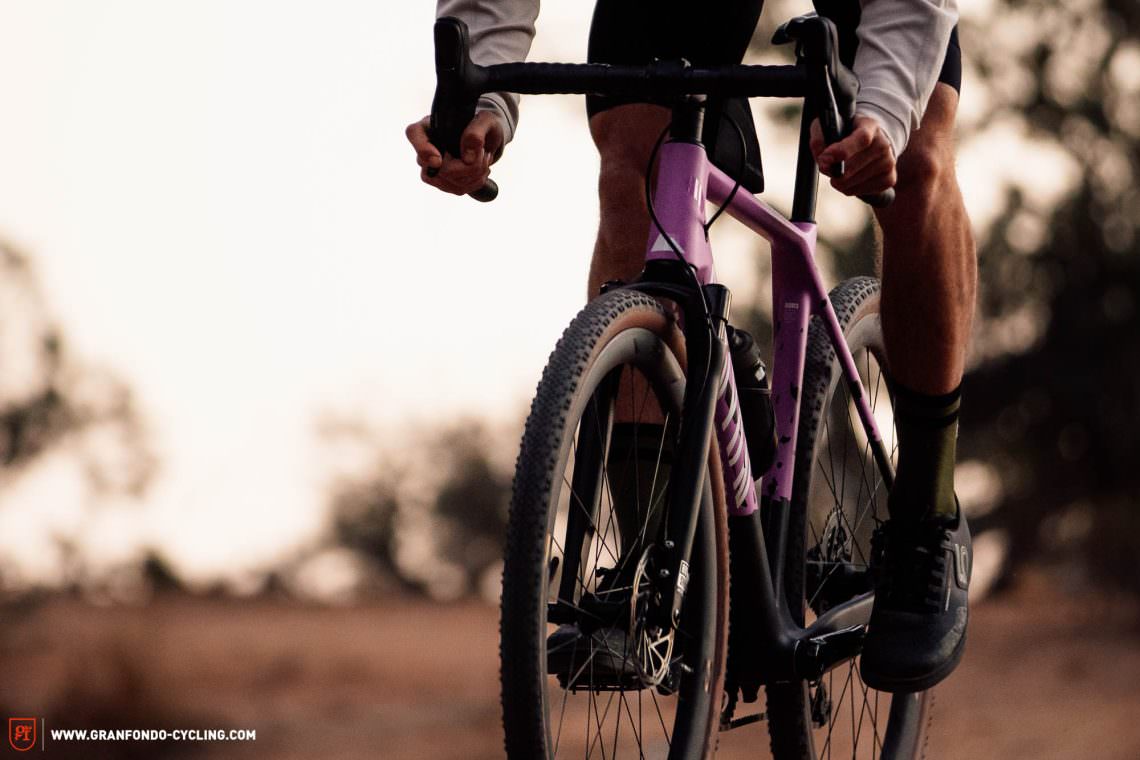
4. Acceleration and speed
Regardless of whether you’re setting off from a café, during a short sprint to catch up or during a high-speed attack on a dirt road, a light-footed bike is a quick accelerating bike, which is a bike that makes you smile. For this, a low moment of inertia is just as important as the distribution of weight. The profile and rolling resistance of the tires play an important role too. The bike shouldn’t just accelerate quickly but also be able to hold its speed efficiently. Of course, you want to enjoy the scenery on a gravel ride but you’ll also want to have the option of traversing a region quickly if you feel like it. As with traditional road bikes, the overall package can only be coherent if the weight of the components is correctly distributed and the riding position is balanced. Ultimately, personal preference plays a major role in the choice of components: do you prefer a little more carbon bling and performance or are you more interested in the robustness and reliability of metal?

5. Look and finish
Let’s be honest, who hasn’t caught themselves looking at their reflection in a shop window while on a bike ride to check whether their riding position is correct and they and their bike are looking good? We sure have. Admittedly, some of us might be vainer than others and everyone has their own priorities, but one thing is certain, those who like the look of their bike are more likely to take it out for a ride and treat it with care. In turn, an important criterion in our assessment isn’t just that a bike is aesthetically appealing but also that the finish and workmanship are of high-quality and that every component harmonises with the rest of the build. Our hypothesis is this: the more sex appeal a bike has the more mileage it will get and the more endorphins will be flowing through your body as a result. The next criterion provides scientific proof of this fact.
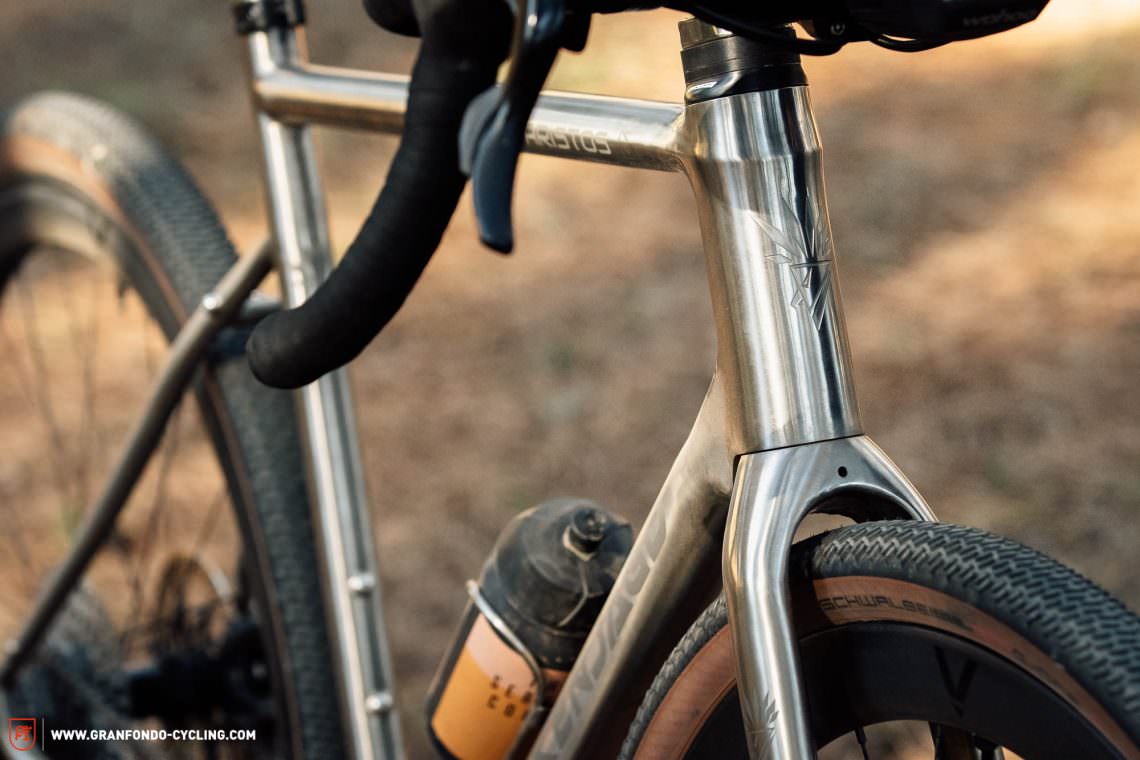
6. Riding pleasure
Sometimes less is more, but here, more is definitely more. Having fun on the bike is a result of all of the criteria above and we see it as the ultimate index of a bike’s quality! While we don’t think it is practical to analyse each of our test riders’ dopamine, serotonin and endorphin levels after a ride, we’ve had to orient ourselves by the Theory of Gravelty, which we came up with for last year’s group test. Once again, it was time to get out the magnifying glass and slide rule:
Number of smile lines or nasolabial folds
+ number of tears of joy
x splashes of dirt on the teeth²
÷ riding time
= riding pleasure



Who tested and how do our testers define riding pleasure?

Gravel? All-day, every day! My gravel bike has to perform just as well on the daily commute to the office as it does on a long ride over the weekend. Balanced handling, efficiency and comfort are what I want.

Between work and changing the oil on my Land Rover Defender, I normally push mountain bike suspension to the limit. My ideal gravel bike, therefore, combines off-road performance with the speed I can’t find on MTBs.

To be able to perform at my best, I make sure that my body is always sufficiently hydrated and supplied with micronutrients. I pay just as much attention to the details as I do to the gravel bikes. I award plus points for clever solutions and design features.

Team kit and power meter are my utensils for road races. In training, however, the gravel bike is often my first choice to avoid the Stuttgart traffic jams. Nevertheless, I don’t want to do without high speed and razor-sharp handling.

Tops and flops
Often, it’s the small details that make all the difference: innovative technology, seamless integration, first-class workmanship and cleverly selected components. Here, you will find all the tops and flops of the bikes from our big gravel bike group test.
Tops

The Rock Shox Rudy Ultimate suspension fork on the Canyon Grizl CF SLX 8 eTap Suspension contributes significantly to the bike’s wide range of uses. It raises the bike’s performance in terms of comfort, efficiency and safety to a higher level.

The Specialized S-Works Crux is dominated by slim tube shapes and the lightweight construction technology borrowed from the Specialized S-Works Aethos helps the bike to weigh an incredible 7.15 kg. The Crux accelerates like there’s no tomorrow.

The bottom bracket area of gravel bikes is particularly at risk of stone chips or ground contact. A protective cover like the one on the BMC URS LT ONE can also be found on the Cérvelo Áspero and the ROSE BACKROAD and is a simple solution to protect the frame.

Mullet gearings, such as here on the OPEN WI.DE., combine a single chainring with oversized cassettes from the mountain bike sector with a gear range of up to 520%. This means they offer the right gear for almost all situations.

The weld seams on the FOCUS ATLAS 6.8 are bulky and do not shine with aesthetics. But they make the bike very stable and give the feeling that it will last forever. This is reassuring in a fast-paced world and shows that solid workmanship is also available for little money.

Sometimes it pays to bring things together that historically don’t quite go together. A dropper post on a gravel bike is just such a thing. On the 3T Exploro Ultra, the retractable Crankbrothers seatpost provides more body travel and thus significantly expands the bike’s range of use.
Flops

The Campagnolo EKAR must once again be called a flop in this comparison test – notchy and spongy shifting causes frustration. The problem can only be minimised partly by a complicated, correct adjustment of the shifting.

The valve gives it away: the CUBE Nuroad C:62 SLT is the only bike in the comparison test that does not use tubeless tyres, but still comes with a tube. The question is: why? The disadvantages in terms of puncture resistance are too great, and there are hardly any advantages. For gravel bikes: ride tubeless!

The seat post of the GIANT Revolt Advanced 0 keeps slipping down despite correct tightening torque and the placeholder, which is necessary when you want to fix the D-shaped seat post in the round clamp, can easily fall into the seat tube. Based on the echo, we reckon it’s at least 10 metres deep.

It almost looks as if the drops on the handlebars of the Felt Breed 20 have simply been sawn off. There’s no other way to explain such an ergonomic mistake. The drops are so short that you often almost reach into the empty space and then have to grab them again.

With 2×12 gears, the SRAM Rival eTap AXS offers a fine gradation and a bargain entry into the world of electronic shifting. Overall, however, too many gears overlap and the gear range is designed more for the road – even the lightest gears offer too little reserve for hilly gravel terrain.

We cheer the Storck GRIX.2 Platinum for its many options for attaching luggage. However, we don’t really enjoy the lazy integration of the necessary attachment points, as this torpedoes the otherwise very tidy appearance of the bike.
Which is the best gravel bike?
Who is the new gravel world champion? The search for the best all-round gravel bike in 2022 took us across Spanish gravel dreams and Swabian commutes to the gravel throne. At the end of the test days, there were hot discussions – and ultimately a clear winner!
The best gravel bike of 2022:
Canyon Grizl CF SLX 8 eTap Suspension
The battle for victory in this year’s gravel comparison test was also a battle of concepts. Between purebred performance weapons, classic gravel bikes, representatives of the metal faction and bikes with active suspension elements, the truth lay hidden. In the end, the Canyon Grizl CF SLX 8 eTap Suspension won this battle for the place as best all-rounder quite clearly and confidently. The use of the Rock Shox Rudy Ultimate suspension fork makes the already wide range of use of the Grizl platform even wider and ensures that the bike combines comfort, efficiency, safety and, last but not least, riding fun in an unbeatable way in most of all possible scenarios. The result is boundless riding pleasure for gravel novices and experienced riders alike on a maximum number of surfaces, chiseling a fat grin on your face. The grin only gets wider when you look at the extremely fair Canyon price tag: for € 4,999, the test winner’s unbeaten all-round performance is also available to you. Congratulations, Canyon!

Our gravel Best Buy:
SCOTT Addict Gravel Tuned
If active suspension elements on gravel bikes are too newschool for you and you can do without absolute comfort, then the SCOTT Addict Gravel Tuned is a bike that knows how to convince with the best equipment, a wide range of uses, first-class handling and a good portion of riding fun. That’s why the bike won the coveted GRAN FONDO Best Buy 2022. With enough mounting points for bidons and equipment, mudguard attachments and power metre, the doors are open for long distance riding, bikepacking, structured training and commuter use. But at the heart of it all is the HMX carbon frame, which combines low weight with good vibration damping and stiffness in all the right places. If you don’t want to pay €8,999 for the Tuned model, you can opt for cheaper models in the SCOTT portfolio, but then you will have to do without the outstanding HMX frame.

Exciting alternatives
Even though carbon is the material of choice for the vast majority of the test bikes – it is far from being said that it is the only sensible material. The perfect proof of this is the Falkenjagd Aristos R, with its 3D printed titanium frame. The bike not only has beguilingly beautiful shapes that are modelled on the organic forms of modern carbon frames, but also convinces with well-thought-out details, flawless workmanship for eternity and riding pleasure across a wide range of uses. Chapeau!

Yes, we were looking for the perfect all-rounder and no, the Ridley Kanzo Fast cannot pass as such. But we also proclaim in our findings (spoiler alert) that all-rounders regularly lose out to specialists in special disciplines. So if you know exactly what you want, you’re always better off with a specialist. And if you want absolute speed on hardpack and compact surfaces – in other words, American Gravel style – then the Ridley Kanzo Fast is a particularly good choice.

One bike stands out from the test field on many levels, weighs the least and costs the most by far: the Specialized S-Works Crux. If you sweep the numbers aside and concentrate on the bike’s performance, little changes. Here, too, the Crux clearly stands out from the test field. No other bike in the test is so mercilessly nimble and so agile in handling. These characteristics demand an experienced hand at the handlebar. If you have one, you can set out to win races in gravel and cyclocross with this bike – a clear recommendation for all performance fans!

The competition


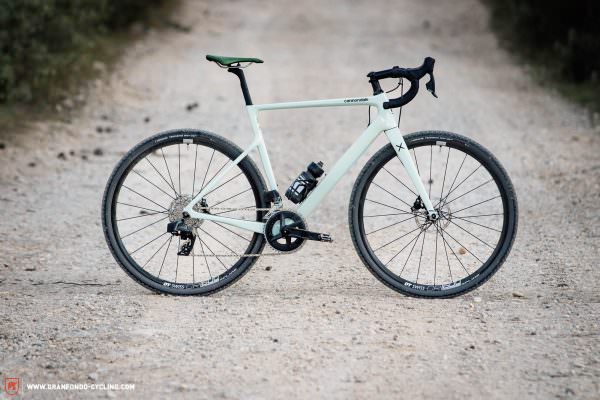











Did you enjoy this article? If so, we would be stoked if you decide to support us with a monthly contribution. By becoming a supporter of GRAN FONDO, you will help secure a sustainable future for high-quality cycling journalism. Click here to learn more.
Words: Benjamin Topf, Tobias Hörsch Photos: Benjamin Topf, Peter Walker






